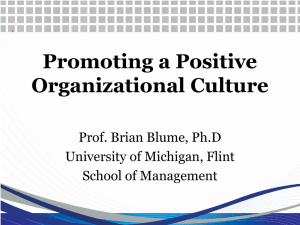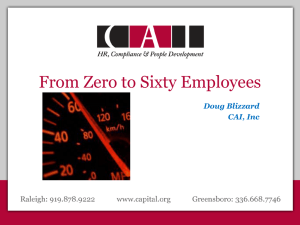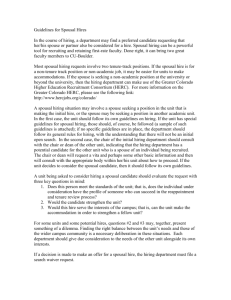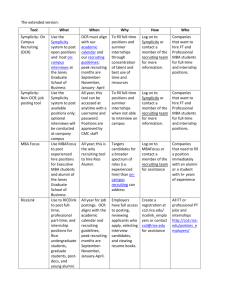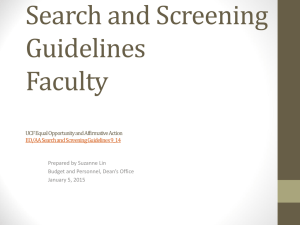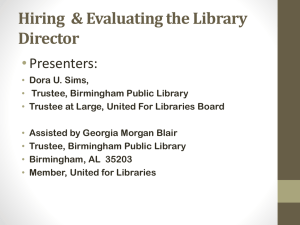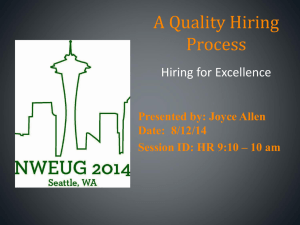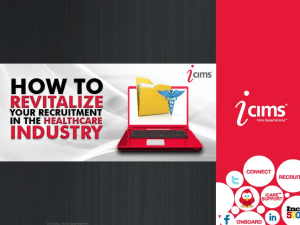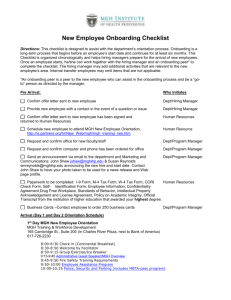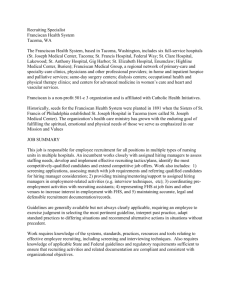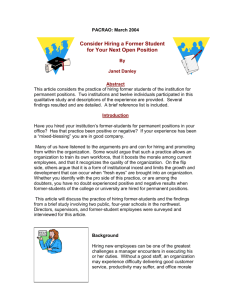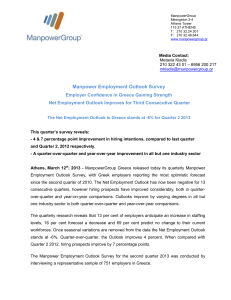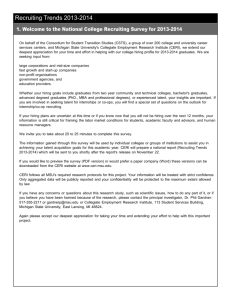Recruiting Trends 2014-2015 - NJACE
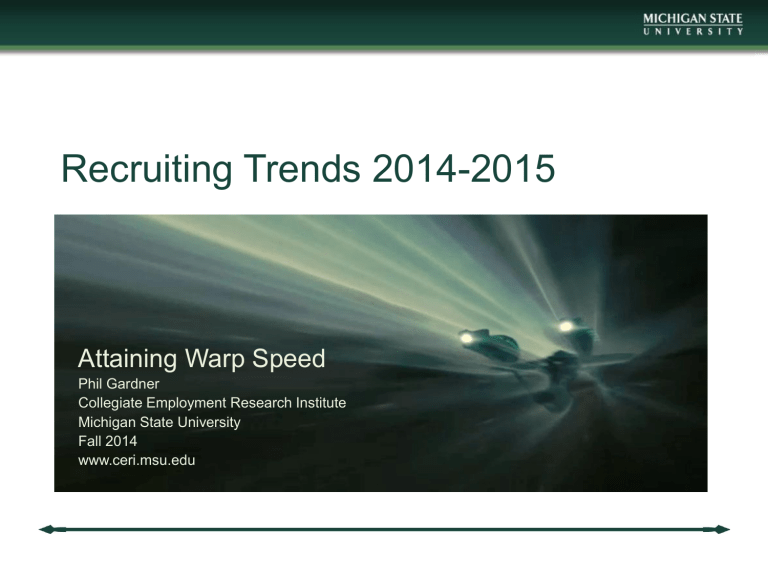
Recruiting Trends 2014-2015
Attaining Warp Speed
Phil Gardner
Collegiate Employment Research Institute
Michigan State University
Fall 2014 www.ceri.msu.edu
Steady Progress
Review:
Four Year Perspective, BA Degree (RT series)
12%
10%
8%
6%
4%
2%
0%
Series 1
Column1
Column2
2011 2012 2013 2014
2014-2015
18%
16%
14%
12%
10%
8%
6%
4%
2%
0%
2011 2012 2013 2014 2015
Series 1
Column1
Column2
Everyone Loves a PARTY!
College Labor Market: Good to Very Good
Industrial Sector: Very Good
97% Expect to hire at least one new graduate
40% Expect to increase hiring over last year
25% Have definite hiring targets as of September
Moving the Needle
GROWTH
• Investment in facilities
– up
• Job growth above magic number
• Positive earning reports (maybe not this week)
• More confident consumer
• Housing – so-so
TURNOVER
• Highest level of concern since 2007
• Poised to leave indices – high
• Job satisfaction numbers – so-so
Hiring Targets for 2014-2015
Number of
Employers
Associates
Bachelors
MBA
MS/MA
PhD
Professional
Total
698
2116
638
705
254
161
2191
Average
Number of New
Hires per
Organization
12.3
43.8
5.9
12.5
7.3
4.2
54.3
Change from
2013-14 (%)
20
8
16
19
16
38
No Change
Associate’s Degrees
• Continues to strengthen
• May out perform Bachelor’s market
• Starting Salaries outpace Bachelor’s salaries
MBA Degrees
• Recovery has been mixed
• Last year – wiped out by Financial Service
Sector
• Largest percentage gain this decade (small numbers)
• Entering strategic period
Bachelor’s Degrees
• Swinging in favor of students --- COMPETITIVE
• Skills and Competencies -- NECESSITY
• Work Attitudes and Behaviors
• Not a free pass
•
S tem mania
Science
Technology Engineering Mathematics
Organizational Size
• All size categories – strong outlook (except
MA/MS)
• Very Small (<100) – BA 12%
• Very Large (>10,000) – BA 20%
• MBA – strong across the all groups, especially
>10,000
Economic (Industrial) Sectors
Six sectors report double-digit growth in hiring for bachelor’s degrees.
60
50
40
30
20
10
0
-2
Educational services
-10
8
Health services
16
17
24 24
Double-Digit Growth
31
51
Nonprofits Manufacturing Government Professional, business & scientific services
Finance & insurance
Information services
A Thirty Year Comparison: 1985 -- 2015
• 1985 Leading Sectors
• Manufacturing
•
•
Retail
•
•
Finance/Insurance
•
•
Government
• 2015 Leading Sectors
• Services – professional, business, science
Non-profits
Government
Health Services
• Finance/Insurance
Biggest Challenge in Filling Positions
• Computer Science/IT
• Sales
• Analysts
• Insurance – all positions
• Agricultural scientists
• Customer & business services
• Engineering (EE & ME)
• Nurses
• Special Education
Starting Salary Offers
• 53% increased salaries in 2007
• 37% will increase salaries this year
• Average increase 5%
• Bonuses – 7%
• Performance Bonuses – 27%
• Small companies moving ahead faster
• Wage pressure – the ripple effect
Reaching Hiring Targets: The Obstacles
• Competition
• Lack of Qualified Candidates
•
•
•
Not prepared
Skills & Competencies
• Expectations
• Internal resources
Insufficient staff
• Budgets
• Issues with campuses
• Reneging
Internships: Numbers Increase
• 92% of organizations with internship/co-op will hire
• 40% will provide more opportunities than last year
• Paid internships rise
• Hourly salaries stay about the same
New Jersey – New York Outlook – All FT
• 597 full-time recruiters/HR responded
• Small companies: <500 –45%
• Overrepresented in large companies: >10,000
(25%)
• Main sectors: PBSS – 30%; Manufacturing –
10%; Finance –9%; Educational Services – 8%;
Non-profit – 6%; Information Serv. – 6%
NJ & NY all FT continued
• 88% -- hired a new graduate last year
• 97% intend to hire this year
• Outlook overall -- 3.3; Sector – 3.8
• 28% Definite but 33% Still setting targets
• 23 (av.) core schools
• States: NJ – 14%; NY – 10%; CA – 10%; MA –
7%; TX – 5%; CO, IL, PA – 4%
NJ & NY all FT only
• Hiring
Associates
Bachelors
MBA
MA/MS
PhD
Professional
Average Number
Expected to Hire
27
109
14
26
7
5
Percentage change from last year
9
15
72
2
13
12
NJ & NY all FT
• 39% of FT will increase starting salary
• 5.6% average increase
• 68% expect to seek interns
• 39% will increase intern hiring
• 49 average hires
NJ & NY: Respondents only
• 300 respondents – 55% Full-time
• 58% 500 or fewer employees
• 19% over 10,000
• PBSS – 24%; Education serv. – 8%; Fin &
Insurance – 9%; Manuf. – 10%; Non-profit – 8%;
Hospitality – 7%
• Overall – 3.2
• Industrial sector – 3.5
• Core Schools – 7 - 8
NJ & NY (only) Outlook
• Hiring
Associates
Bachelors
MBA
MA/MS
PhD
Professional
Average Number
Expected to Hire
5
75
4
4
Percentage change from last year
89
61
65
-5
Last Info on NJ & NY (only)
• 29% of FT will increase starting salary
• 6.6% average increase
• 72% expect to seek interns
• 42% will increase intern hiring
• 25 average hires
Benchmarking Recruiting Programs
• % of professional hires result of on-campus recruiting – 47%
• Acceptance rate of full-time offers – 75%
• % of new hires former interns – 26%
• One year retention – 84%
• Salary Compensation – 3
• Intern Acceptance – 79%
• Intern Conversion – 44%
Special Groups: Vets and Persons with
Disabilities
• Veterans – modest – serious effort
• PWD – modest effort
• International – opportunistic
• Less than 2 yrs exp.
–very serious
Empathy
• University of
Michigan study
• Reaching adulthood
• Social media
Cultural Capital
• 700 or 1/3 of full-time recruiters provided input
• Value: aware of global challenges & work effectively in multi-cultural environment
• 11% seek multi-language speakers
• Multi-culturally awareness trumps foreign study
• Affects the integration of teams
• Positions: sales, customer service, project management, marketing
Short-term Outlook
• Chaotic – competitive – will the best candidates even be at the party
• Length of the run – or back to normal
• Global economy
• Consumers – sustain confidence
• Inconsistent behaviors by all parties
• Very young recruiting staff
• Candidate drift
• Demands from colleges
Consider this:
• Disruption from cognitive advancement – constant
• Just one or an entire team!
• “Bring parents to work day!”
• Talent on demand – “leaving when I need to”
• End of a monopoly – changing digital platform – don’t control recruiting function
• Who do we align with?
• What’s our role?

